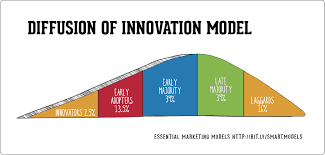Step 1 – Build a Culture of Change
First, leaders prepare for change. Knowing that the world will never remain the same, leaders collect information and analyze the strengths and vulnerabilities of the business on an ongoing basis. This helps them anticipate and capitalize on emerging trends in the marketplace.
Thinking about the future and keeping an open mind also helps leaders and their businesses stay resilient. Building resiliency enables leaders to recognize new opportunities that emerge and take on new challenges with confidence.
Step 2 – Build a Plan
The leader sets a clear direction for the change, how it will be accomplished, and how its success will be measured. No aspect of the implementation is left to chance. The leader defines who, what, where, and when each step of the change will take place.
Step 3 – Explain the Change
Leaders know how to explain change to others. They can set the context and talk with others about the business reasons for the change. They engage others in conversation and clarify the long-term value of making the change.
Step 4 – Acknowledge that Change can be Uncomfortable
Even when there is a business reason for making a change, great change leaders know that the people affected by the change will still have some concerns and may experience fear. They understand that fear and resistance are natural reactions to change. Supporting people by recognizing the loss of familiar ways of working is an important step towards building long-term commitment. It helps minimize disruptions to the business and eliminates confusion for people during the change process.
Step 5 – Create the Climate
During the implementation of any change, there will be “early adopters” (people who get excited about change). A successful leader, the “innovators”, identifies these key influencers who are supportive of the change, and with the leader’s help, these individuals can help set a positive tone for the new change. “Early adopters” will be the key to transitioning the “early majority”. They build excitement and momentum and help others see the benefits of the change and let go of the past.

Step 6 – Launch and Monitor Change
Finally, once the change is implemented, a leader must make adjustments and ongoing improvements. This helps people overcome barriers and sustain the change as part of the organization’s new culture.

